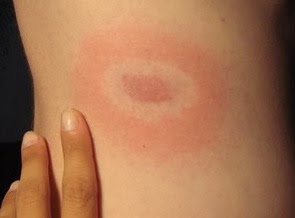The essential fact of weight gain or loss is that fat (triglycerides, TGs) stored in fat cells (adipocytes) is made from glycerol (from glucose) and fatty acids (from the blood or recycled from previously stored fat droplets.) Adipocytes must import glucose to make glycerol and TGs.
Glucose Is a Carbohydrate
 Glucose is a sugar or carbohydrate. Once again the word tells the story, i.e. carbohydrates consist of carbons that each have a hydrogen, -H, and a hydroxyl -OH attached. Since each glucose has six carbons, then it can be roughly approximated as (H-C-OH)6. This is convenient notation, because this lets glycerol be considered as a three carbon sugar, i.e. (H-C-OH)3.
Glucose is a sugar or carbohydrate. Once again the word tells the story, i.e. carbohydrates consist of carbons that each have a hydrogen, -H, and a hydroxyl -OH attached. Since each glucose has six carbons, then it can be roughly approximated as (H-C-OH)6. This is convenient notation, because this lets glycerol be considered as a three carbon sugar, i.e. (H-C-OH)3.Glycolysis Can Convert Glucose into Two Glycerols
The central metabolism of all cells is called glycolysis, literally breaking glucose. The products of glycolysis are usually high energy electrons (carried by NADH), two pyruvates and ATP (chemical energy). Active cells with access to oxygen can use their mitochondria to accept the high energy electrons and pyruvate, and generate lots of ATP and CO2. Fat cells can bring in glucose by glucose transporters, make glycerol instead of some of the pyruvate and use the rest of the pyruvate by mitochondria to make fatty acids (instead of ATP.)
Fats Have Three Fatty Acids Attached to Glycerol: Triglycerides
Fats, triglycerides, are made in a series of biochemical reactions catalyzed by enzymes. The enzymes first make glycerol phosphate from glycerol and NADH, from glycolysis. Then the fatty acids are attached. The fatty acids can come from three sources: from glycolytic pyruvate, from fatty acids offloaded from the blood stream and from constantly recycled stored fat. Regardless of the source of fatty acid, new glycerol phosphate is needed for TG production in fat cells
Insulin Is Required for Glucose to Enter Adipocytes
Glucose is transported into adipocytes by specialized proteins embedded in their cytoplasmic membranes. A few glucose transporters are always present to supply enough materials and energy for basic maintenance of the adipocytes. Even with very high blood sugar (glucose), the glucose uptake of the adipocytes will not be increased without an increase in the number of glucose transporters in the cytoplasmic membrane. Insulin released into the blood by the pancreas in response to an increase in blood sugar, stimulates the adipocytes to introduce more glucose transporters into their membranes and glucose is actively transported into the adipocytes. The adipocytes then convert the glucose into glycerol, fatty acids and ultimately stored fat.
Without High Blood Sugar and Insulin, Adipocytes Lose Fat
Fatty acids in adipocytes are constantly be converted to fats and then released from storage as they are enzymatically removed from the fats to reappear as free fatty acids. As a consequence, the absence of extra glucose in the adipocytes will mean a shortage of glycerol and a net accumulation of free fatty acids from stored fats. Excess fatty acids will mean that fatty acids will be removed from rather than deposited in adipocytes.
Weight Gain Occurs with High Blood Sugar Regardless of Fats Eaten
Fat will be produced in adipocytes if there is high blood sugar and insulin production, because the fat already stored in the adipocytes will be recycled into fat, any fat in the diet will be converted into stored fat and glucose transported into adipocytes will be converted into fat. In addition, protein in the diet and potentially in muscle, will also be converted into stored fat.
Weight Loss Occurs with Low Carbohydrate Diets Regardless of Fats Eaten
Fats that are eaten without sufficient carbohydrates to cause a rise in blood insulin, are metabolized for energy in liver and muscle. Excess fat ends up being secreted into the gut by the gall bladder and lost as feces. Type I diabetics without insulin cannot get enough glucose into their cells to make fat and cannot gain weight without insulin. The amount of glucose, as simple carbohydrates (sugar or starch), needed to raise blood sugar to trigger a rise in insulin production is typically 30 to 50 grams per meal. Hunger, a response to a drop in blood sugar, prior to the next meal is a typical indication of insulin production and fat storage.






